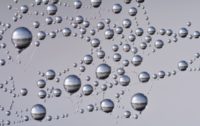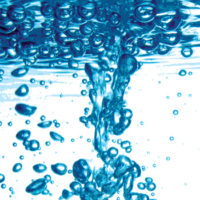Going with the Lateral Flow: Advances in Accuracy and Speed

French mathematician Henri Poincaré once said, "Science is facts. Just as houses are made of stones, so is science made of facts. But a pile of stones is not a house and a collection of facts is not necessarily science." In terms of the many advances made in rapid microbiology methods for use in food industry applications, this well-known analogy is easily expanded: Just as a well-built house requires careful construction with first-rate materials, so too does good science require the arrangement of known components into a cohesive system to enhance its practical use.
Recent advances in the lateral flow immunoassay technique for food samples is a prime example of good science made better by improving connections between the building blocks of the method, says Dr. Orla Cloak, a senior research scientist and Product Manager, Pathogen Products with Newark, DE-based Strategic Diagnostics Inc. (SDI), a leading developer of rapid immunoassay tests for the food industry.
"We've come a long way in the past five years because we know a lot more about the different components of the lateral flow and how we can optimize them," she says. "This assay has been long recognized as an inexpensive, easy-to-use method with a rapid time-to-result. But there was a predisposed idea that in order to gain these advantages, the user would have to compromise accuracy. SDI has developed improved lateral flow technology so that users will know they do not have to compromise--they can have a simple-to-use, economical test that gives accurate, sensitive pathogen detection results in minutes, not hours."
Cloak adds that these improvements have been made possible, in large part, because there is a greater understanding of not one, but several parameters of the technology. "We understand the target organisms better, and how we can purify a target protein to get a very pure preparation. Using these pure protein antigens we are able to make antibodies that have the desired specificity. We also have a better understanding of how we can optimize that antibody on the strip to get a very accurate, sensitive and rapihttp://www.sdix.comd test. These are the areas of improvement that make pathogen testing in very simple settings, such as minimally furnished labs located in many food plants, practical for on-site use by the food industry."
Optimizing for A Better Flow Builds in Testing Confidence
The lateral flow immunoassay is an antibody-antigen sandwich complex that detects microorganisms of interest based on liquid capillary action moving up a strip. Once a sample is enriched, it is placed on the device's sample port and flows up the membrane by liquid chromatography through a zone that contains small, mobile colored particles coated with a specific antibody, such as colloidal gold or latex particles. If the antigens are present in the sample, they bind to the colored particle antibody conjugate to form an antibody-antigen complex. This complex migrates through a porous nitrocellulose membrane and passes through another zone consisting of an immobilized antibody where, if the antigen is present, the complex is captured and visualized by the formation of a colored line. In case of gold, the line will be red. The sample continues to migrate up the membrane through a second zone that is designed to capture any antibody gold conjugate that has not been captured in the first zone. If a single control line appears on the device, the test is negative for the target organism; two lines appear if it is positive.
Total test times vary depending on the sample enrichment method used and the lower detection limit, says Cloak, but the detection time takes as little as 10 minutes. "For example, the SDI RapidChek E. coli O157 test has an 8-hour enrichment for O157, after which the sample is taken directly from the enrichment broth, put onto the sample port and you get results within 10 minutes. Assay time for our Salmonella lateral flow assay also is 10 minutes, with an enrichment time of 24 hours. The lower level of detection has been improved in the last few years, as well, and we have a greater knowledge of flow rates and capture capacity. Another way to improve the specificity of the overall system is to optimize the enrichment media to promote greater bacterial populations in a shorter time period."
Optimization of various parameters within the actual strip are where the biggest advances have been made in the accuracy of lateral flow assays, Cloak adds, including a better understanding of the materials, dimensions and design of the strip test components. "A few years ago, for example, lateral flows had a degree of false positives. By optimizing the test components, how they are placed on the strip, we can impact how the antibody interacts with the various chemistries and get a more specific bind to the target, resulting in a significant reduction of false positives. Reducing the number of false positives reduces the amount of time the lab has to spend on confirmation--typically by a cultural method that takes days, not hours--and allows the food company to release product faster."
At the end of the day, Cloak says, any rapid microbiology method is only as good as it is useful. "Food companies need rapid and accurate pathogen tests to meet ever-increasing food safety challenges and to protect their brands. Continued advances in methods such as lateral flow assays will go far in ensuring that these companies can achieve those critical goals.
www.sdix.com
Looking for a reprint of this article?
From high-res PDFs to custom plaques, order your copy today!








